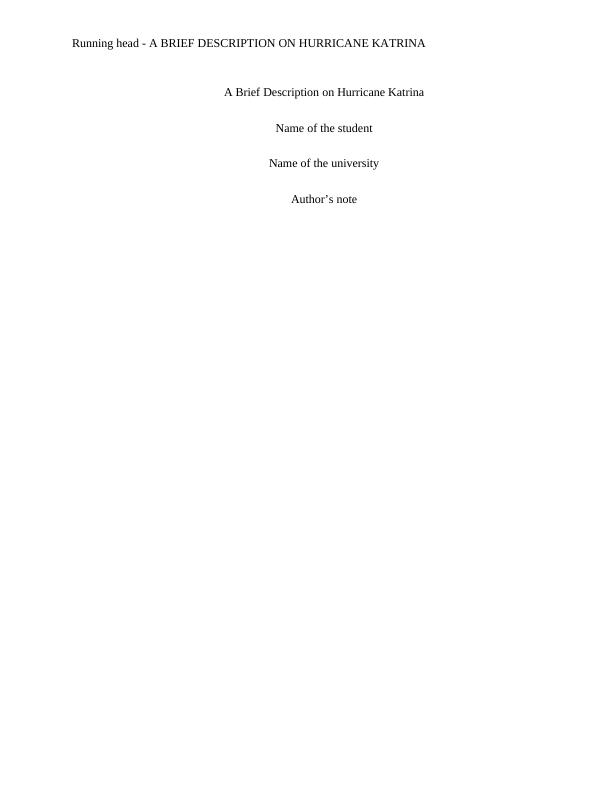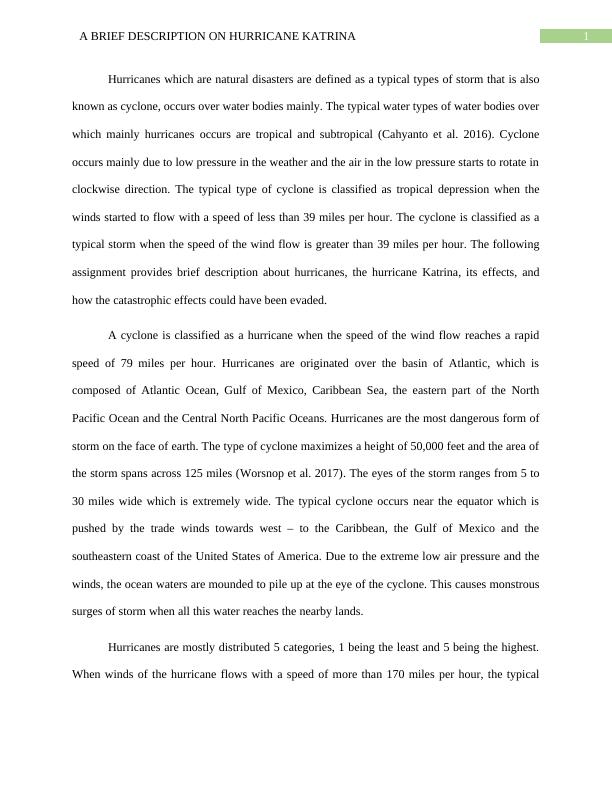A Brief Description on Hurricane Katrina
8 Pages1887 Words54 Views
Added on 2023-04-07
About This Document
This assignment provides a brief description of hurricanes, focusing on Hurricane Katrina, its effects, and how the catastrophic effects could have been avoided.
A Brief Description on Hurricane Katrina
Added on 2023-04-07
ShareRelated Documents
End of preview
Want to access all the pages? Upload your documents or become a member.
Report on Analysis of Hurricane Katrina
|6
|1598
|55
Hurricane Katrina: Analysis and Recommendations
|10
|3008
|92
Hurricane Irma Hits USA: Management, Lessons and FEMA Response
|19
|4231
|328
Photo Essay of Hurricane Irma Essay 2022
|9
|1397
|8
Community Health Nurse Career Overview
|11
|1217
|20



